Beyond the Temples of Angkor Wat
The Jewels of Khmer Artistry
For Quest Magazine
For centuries, the Cambodian temple complex of Angkor Wat has been a beacon of fascination for scholars, historians, and travelers alike. Built in the early 12th century by King Suryavarman II, Angkor Wat was originally dedicated to the Hindu god Vishnu but later transformed into a Buddhist monument. The sprawling complex spans more than 400 acres, making it the largest religious monument in the world.
Angkor’s towering spires, expansive courtyards, and impossibly intricate stone carvings still stand as a testament to the architectural prowess and spiritual devotion of the Khmer people.
As technology has advanced, scientists have gained a new understanding of what the Khmer empire looked like at the apex of their power, and since 2015, lidar-generated maps have revealed an elaborate urban landscape stretching across the provinces of modern-day Cambodia.
I had visited once before, almost 14 years ago, and armed with new information, had to come back with a newfound sense of wonder and curiosity. So, I packed my bags, flew to Siem Reap, and rode across dusty roads and through dense jungles to explore some of the lesser-known temples and hidden treasures of the region. My journey started at Koh Ker.
The Koh Ker Stepped Pyramid
Inscribed to the UNESCO World Heritage List in September 2023, Koh Ker was the capital of the Khmer Empire for a brief period in the 10th century AD and is believed by some to be the center of a lost civilization. Veiled in centuries-old mystery and fascination, local lore speaks of a powerful ruler who sought to defy the gods and ascend to immortality, with whispers of concealed chambers and secret passages buried deep within its stone wall confines waiting to be discovered.
Situated approximately 2.5-hours northeast of Siem Reap, the central point of the Koh Ker architectural landscape is the Prasat Thom — a stepped pyramid structure that bears a striking resemblance to the Mesoamerican pyramids, particularly those crafted by the Mayans, such as Tikal, Chichen Itza, and Uxmal. The pyramids of both cultures share a remarkable precision in their construction and alignment with celestial bodies, hinting at an advanced knowledge of planetary motions — an aspect that continues to captivate archaeologists and historians to this day.
Pro Tip: Skip the 2.5-hour drive and take a private helicopter flip from Siem Reap to Kohl’s Ker to see this stunning site in the morning before the day’s heat and humidity set in. - Vanessa, Product Manager
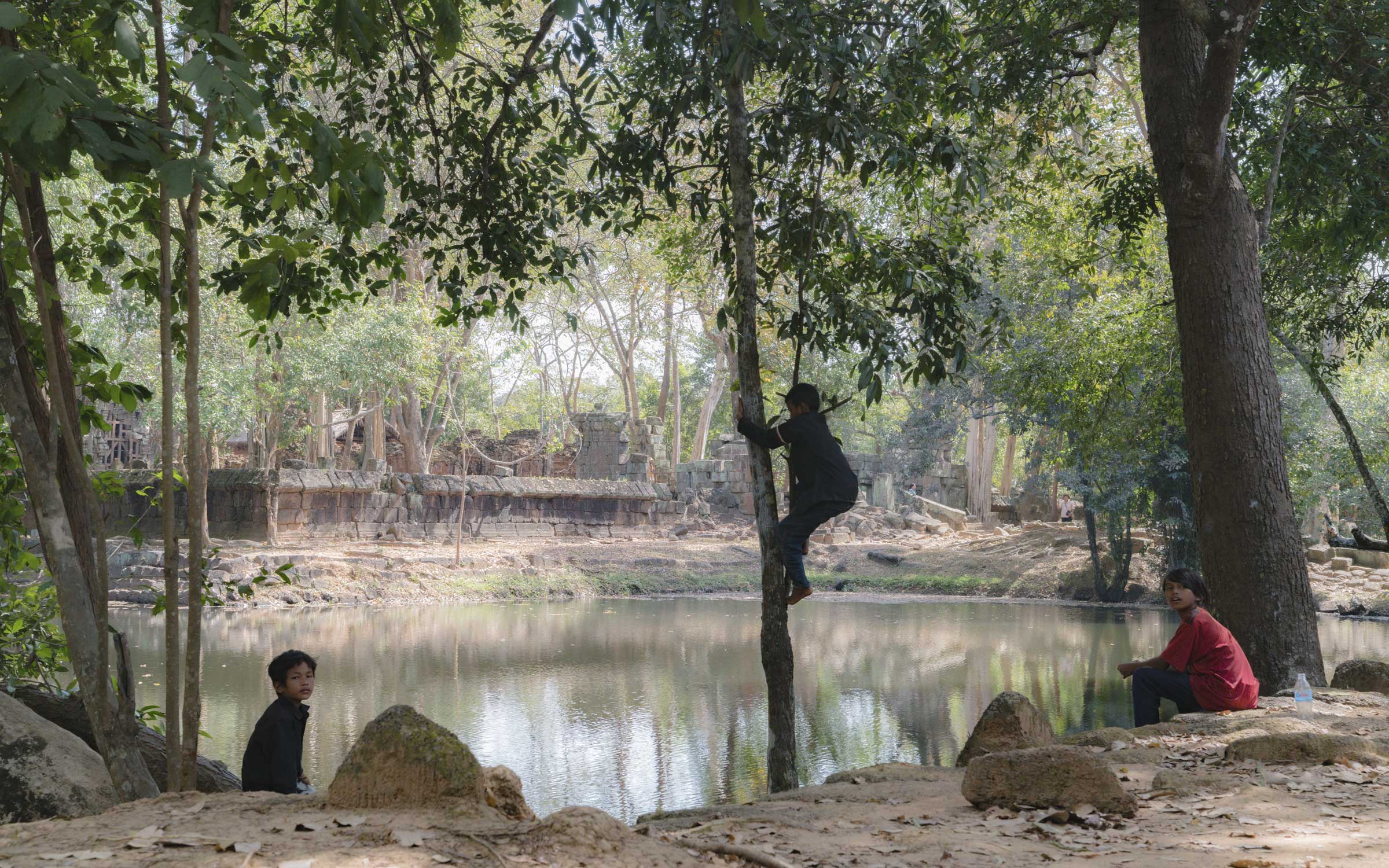
Banteay Srei: The Citadel of Women
Approximately one hour north of Siem Reap, tucked away amidst the verdant Cambodian countryside, are the temple ruins of Banteay Srei. Constructed in stunning pink sandstone, the carvings are so intricate that it is said they could only have been crafted by the hands of celestial beings, giving rise to the moniker "The Citadel of Women."
Banteay Srei was the most visually striking of all the sites I explored, and under the harsh daytime sunlight, the unique blushing sandstone color made the whole temple come to life in a fiery red glow. A lush forest set a calming background, and the moat waters reflected the temple in perfect symmetry.
Venturing inside, every wall of the temple was adorned with distinctive carvings — stories from Hindu mythology leaping off the walls as floral motifs, divine beings, and meticulously sculpted devatas (divine female figures) as 3D reliefs.
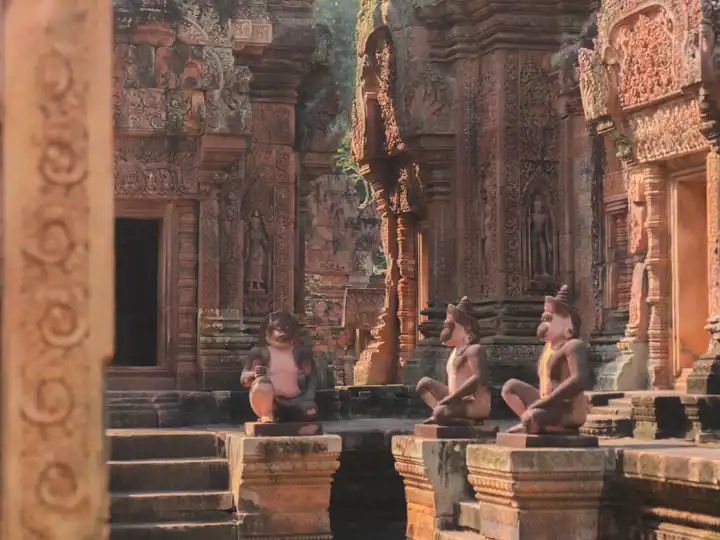
Banteay Srei was the most visually striking of all the sites I explored, and under the harsh daytime sunlight, the unique blushing sandstone color made the whole temple come to life in a fiery red glow. A lush forest set a calming background, and the moat waters reflected the temple in perfect symmetry.
Venturing inside, every wall of the temple was adorned with distinctive carvings — stories from Hindu mythology leaping off the walls as floral motifs, divine beings, and meticulously sculpted devatas (divine female figures) as 3D reliefs.
One of the most famous carvings that you’ll see here is the portrayal of the divine dancer Apsara, etched in fine elegance and grace. The Apsara is depicted in various poses and postures and significantly juxtaposes the imposing guardian figures surrounding each temple.
Reclaimed Ruins
Stepping into the temples of Ta Prohm, Prasat Beng Mealea, and Preah Khan feels like entering a forgotten realm where nature and architecture entwine in a dance of time. These sprawling complexes are nestled deep within the jungle where moss-covered stones and tangled roots create an otherworldly atmosphere, as if the Earth itself has reclaimed the ancient ruins.
It’s an experience unlike any other, to wander through the labyrinthine corridors that once served as a haven for thousands of monks and scholars. I spent many moments here in silence trying to imagine the knowledge and energy that must have been flowing as people passed through for healing and spiritual enlightenment.
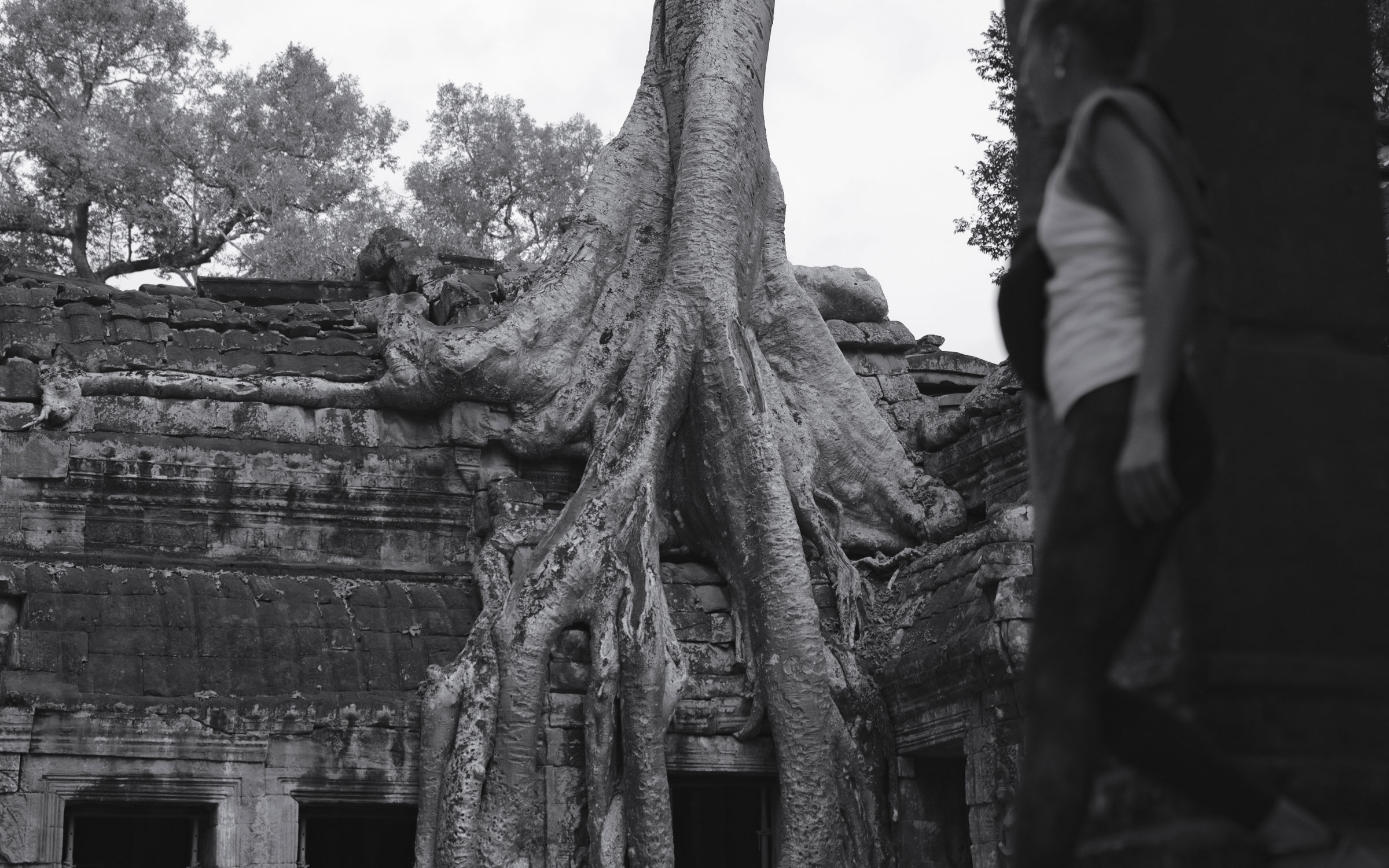
Prasat Beng Mealea took the crown for my pick of all the sites beyond Angkor. Approximately one-hour east of Siem Reap, the ruins remain largely unrestored, and exploring the site feels like embarking on a journey of discovery through millennia. I happened to walk in a few hours before sunset, and the light beams cutting through the dusty jungle haze provided a spectacular backdrop to the ruins that emerged from the dense jungle path.
Wooden walkways allow visitors to cut through most of the levels of the complex, where hidden chambers, ornamental bas-reliefs and towering galleries rise above the surrounding landscape. Most magnificent of all is how the trees and roots have reclaimed the site — intertwined with and growing through the rocks themselves, in all of nature’s complexity.
We learn that its remote location amidst the dense jungle allowed the Khmer kings to connect with the natural world and commune with the gods in seclusion, away from the prying eyes of courtiers and rival kingdoms.
What a stunning place this must have been, during the peak of the Khmer reign.

For the whole family
The temples beyond Angkor promise to be a highlight on any family trip – bringing a sense of wonder and adventure for young ones and parents alike. With knowledgeable and passionate guides striking up images of Kingdoms past, the whole family will learn from stories that bring these ancient temples to life.
And true to style, coupled with five-star accommodations, delicious food, and a vibrant culture, Cambodia is a destination that captivates all, and leaves them wanting to come back for more.
Where to Stay
Amansara
Formerly a guest house for the King of Cambodia, Amansara has been modernized and converted into an intimate boutique hotel on the outskirts of the historic city of Siem Reap. Its stunning location, a short distance from the Angkor Archaeological Park UNESCO World Heritage Site that is home to more than 100 temples, is paired with contemporary luxury to ensure an exceptional Cambodian experience.
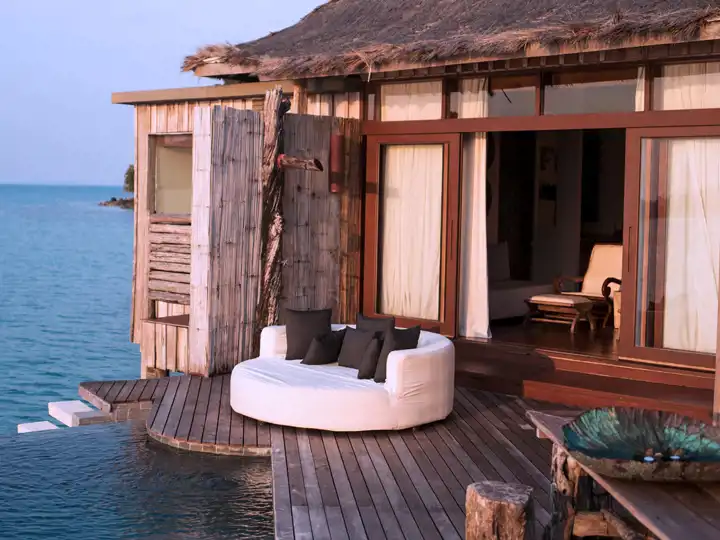
Song Saa Private Island
Leave the world behind and enter the enchanting untouched paradise of Song Saa Private Island, Cambodia’s first private island resort where luxurious relaxation and splendid natural delights take center stage. Spanning two tropical islands in the pristine Koh Rong Archipelago, Song Saa—Khmer for “The Sweethearts”—is a deserted oasis of virgin rainforests, tropical reefs, and white beaches surrounded by sapphire waters... the perfect island getaway.
Raffles Hotel Le Royal
The beautifully restored Raffles Hotel Le Royal has hosted journalists, writers, royalty, and an array of international guests since its inception in 1929. Highly acclaimed by Travel + Leisure and Condé Nast Traveler, this historic haven marries modern luxury with old world charm in the heart of Phnom Penh.
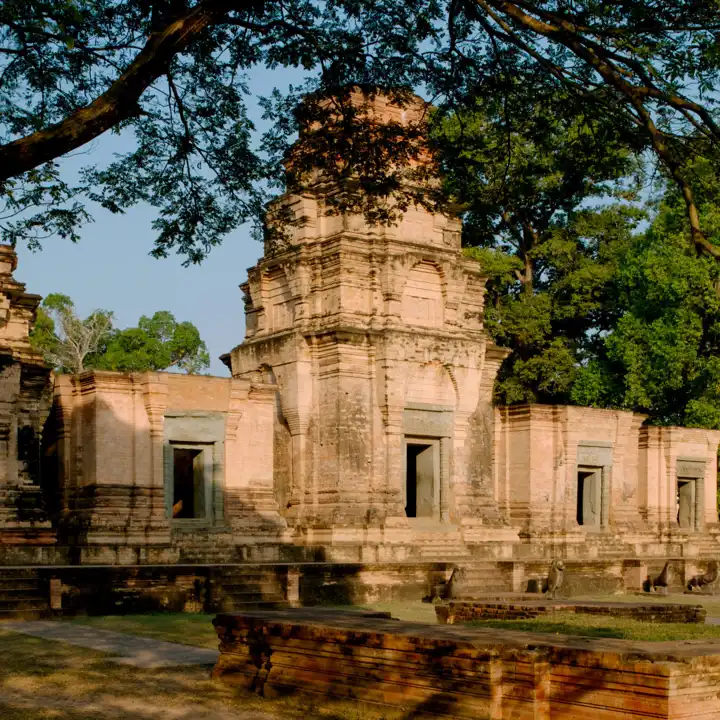
Cambodian Chic
This stunning 11-day getaway unlocks the style and grandeur of Cambodia and its exquisite melding of ancient and modern culture. From UNESCO World Heritage sites and ancient wonders to modern dining and beach leisure, this is an unforgettable way to experience the temples, cuisine, treasures, and coastal retreats in this diverse and majestic land.
See the ItineraryTravel to Cambodia With Ker & Downey
The Travel Designers at Ker & Downey are at their best when crafting a journey unique to you. Contact a designer to start planning a a fully customized luxury trip to Cambodia tailored to your travel style and schedule. For further travel inspiration, follow us on Facebook, Instagram, and X.
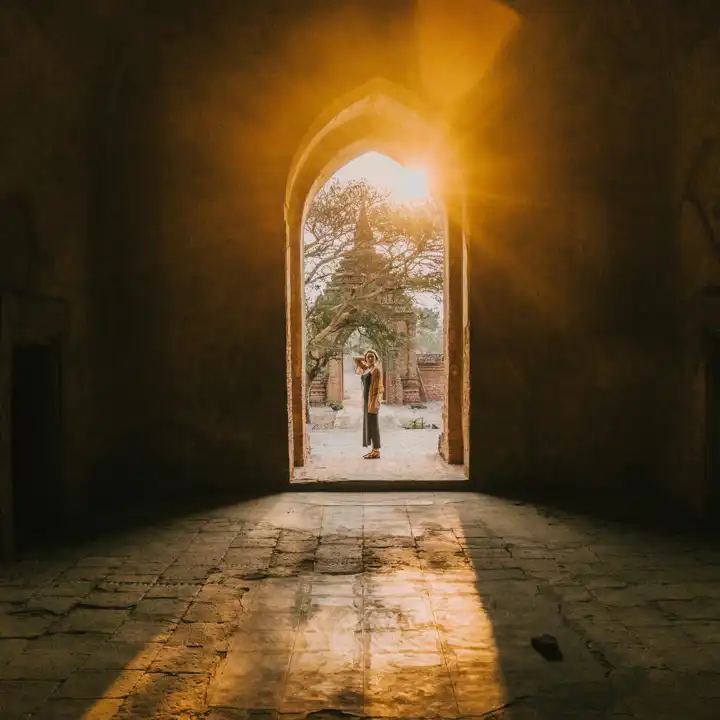
Cambodia
Land of the legendary Angkor Empire, Cambodia is a unique cultural wonder with endless opportunity to explore deeper and further.
Discover Cambodia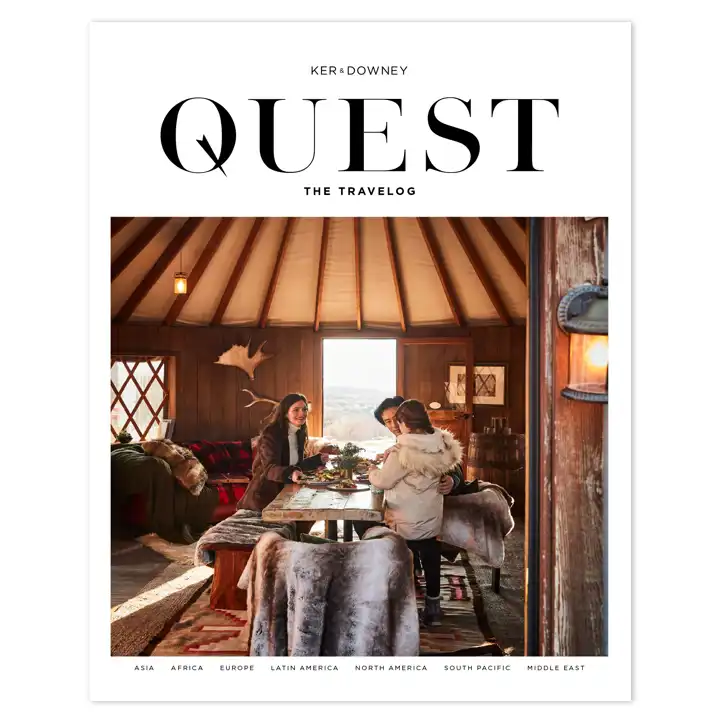
Quest Magazine
Dedicated to the experiential style of Ker & Downey travel, QUEST Magazine features eye-opening content that focuses on unforgettable experience, unheard-of destinations, and the very best our world has to offer. Each issue is packed with insider information, what's new in the world of travel, and editorial pieces that focus on our global culture, philanthropy, and transformative travel.
Read The Family IssueSee What We Are Up To
Subscribe to our Weekly Newsletter for Travel Tips and Insider Guides for Planning your Next Journey!
